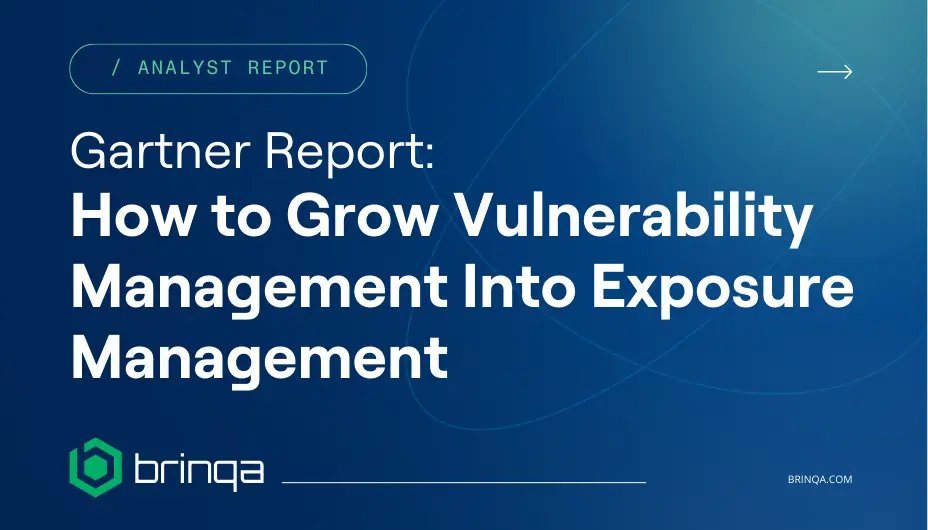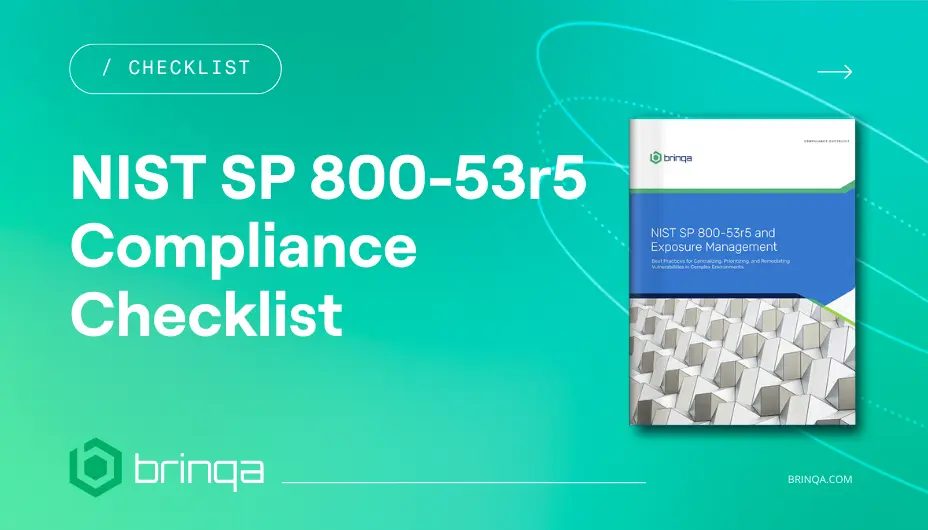GDPR Compliance Guide for Vulnerability Management
by Brinqa, Security Experts//9 min read/

As data‑privacy regulations tighten worldwide, the General Data Protection Regulation (GDPR) remains one of the most comprehensive frameworks in effect today. Enacted by the European Union in 2018, GDPR safeguards the personal data and privacy of individuals in the EU (and beyond). Under the regulation, a preventable breach caused by known vulnerabilities may constitute a failure to implement “appropriate technical and organizational measures” — exposing the organization to regulatory penalties.
Core Principles of GDPR
GDPR sets out seven guiding principles for responsible data handling. These principles form the foundation for evaluating both technical and organizational controls:
- Lawfulness, fairness & transparency – process personal data in a legal, open, and honest manner
- Purpose limitation – collect data only for specified, legitimate purposes
- Data minimization – gather only the data necessary for that purpose
- Accuracy – keep personal data accurate and up to date
- Storage limitation – retain data no longer than necessary
- Integrity & confidentiality – process data securely, protecting it against accidental loss or damage
- Accountability – be able to prove compliance at all times
Why Vulnerability & Exposure Management Matters for GDPR
Unpatched software, misconfigurations, and weak credentials create openings for breaches, ransomware, and unauthorized access. While GDPR doesn’t prescribe a step‑by‑step vulnerability‑management process, it does mandate “a level of security appropriate to the risk.” A modern program that continuously centralizes, prioritizes, and remediates vulnerabilities is essential for protecting personal data and avoiding fines.
Key GDPR Articles, Recitals & Best Practices
Below we highlight the GDPR provisions most relevant to vulnerability management. For each, you’ll find a brief focus statement, an explanation of how vulnerability management applies, and best‑practice recommendations drawn from Brinqa’s work with risk‑based security programs.
Article 5(1.)(f) – Integrity & Confidentiality
Focus: Process personal data in a manner that ensures security and prevents unauthorized or unlawful processing, loss, destruction, or damage.
Why vulnerability management matters: This provision underscores the need for ongoing risk assessments, proactive security patching, and rapid responses to newly discovered vulnerabilities.
Best Practices:
- Consolidate IT, cybersecurity, and business findings into a single source of truth across infrastructure, applications, and cloud.
- Conduct formal risk assessments across assets that process personal data, document findings, and track remediation progress.
- Establish a timely patch‑management process that aligns remediation deadlines with business criticality and exploit likelihood.
- Standardize and continuously update vulnerability scores across tools to reflect changes in the attack surface.
- Leverage pre‑built integrations to maximize tool ROI and reduce manual effort.
- Provide dashboards and risk scorecards that give stakeholders clear, role‑based visibility and drive accountability.
Article 32 – Security of Processing
Focus: Implement measures — such as encryption, resilience, and regular testing — to ensure a security level appropriate to risk.
Why vulnerability management matters: A well‑governed vulnerability‑management program supports these requirements by systematically identifying system weaknesses, prioritizing remediation based on contextual risk, and maintaining the overall resilience of processing environments.
Best Practices:
- Identify weaknesses via unified vulnerability data pipelines that ingest scanners, SBOMs, and pen‑test results.
- Implement pseudonymization and encryption for personal data at rest and in transit, where feasible.
- Prioritize remediation using contextual risk scoring that blends CVSS, EPSS likelihood, exploit intel, and business impact.
- Orchestrate remediation with rule‑based workflows and bi‑directional integrations (e.g., ServiceNow, Jira, GitLab, Azure DevOps) with ticketing and CI/CD systems.
- Ensure resilience and rapid restore of availability by maintaining tested backup and disaster‑recovery procedures.
- Maintain system resilience through continuous monitoring and automated evidence collection for audits.
Recital 83 – Ongoing Confidentiality, Integrity & Availability
Focus: Adopt technical and organizational measures that ensure ongoing security and resilience of processing systems.
Why vulnerability management matters: Recital 83 further highlights the importance of continuous vulnerability scanning, timely patching, and comprehensive remediation workflows as foundations for data‑protection assurance.
Best Practices:
- Normalize threat‑intel feeds (KEV, “Exploited in the Wild,” EPSS) as built‑in risk factors that automatically adjust scores.
- Apply customized business context — asset value, data sensitivity, compliance exposure — to improve prioritization accuracy.
- Automate exception handling and verification loops to keep remediation on track and audit‑ready.
- Deliver stakeholder‑customizable reports and dashboards that demonstrate risk reduction over time.
Download the Complete GDPR Checklist
Want the complete checklist with mapped GDPR articles and actionable recommendations? Download the full GDPR Vulnerability & Exposure Management Checklist to align your program with compliance requirements.

FAQ: GDPR & Vulnerability Management
1. Does GDPR explicitly require vulnerability scanning?
Not by name — but Article 32 compels organizations to implement security controls “appropriate to the risk,” which industry guidance interprets to include regular vulnerability assessments and prompt remediation.
2. Which GDPR provisions are most relevant to vulnerability management?
Articles 5(1)(f) and 32, plus Recital 83, directly reference the need for technical measures that protect data confidentiality, integrity, and availability.
3. How often should organizations scan for vulnerabilities under GDPR?
Frequency should align with risk. Many auditors expect at least quarterly scans, with continuous assessments for high‑risk assets or after significant changes.
4. What evidence is needed to demonstrate compliance?
Maintain records of scan results, risk scores, remediation tickets, SLA performance, closure evidence, and an up‑to‑date inventory of assets that process personal data — ideally centralized in a unified platform.
5. Can automation help with GDPR compliance?
Yes. Automated data collection, scoring, and workflow orchestration reduce manual effort, improve accuracy, and produce audit‑ready documentation.
How Brinqa Simplifies GDPR‑Ready Vulnerability & Exposure Management
While vulnerability management may sound straightforward, no single scanner detects everything. Most organizations depend on multiple scanners, SBOMs, and cloud‑native tools, making it time‑consuming to gain a complete view of risk.
The Brinqa Vulnerability & Exposure Management Platform — powered by the Cyber Risk Graph™ — unifies data, enriches it with threat intelligence, and applies contextual scoring to surface the threats that matter most.
What Brinqa Delivers
- Continuous Asset Inventory: Automatically discover and map every system, application, and data flow that processes personal data.
- Unmatched Integrations: 220+ connectors and bi‑directional workflows with ServiceNow, Jira, GitLab, Azure DevOps, and more.
- Enriched Prioritization: Combine exploitability, business impact, and compliance context for precise risk reduction.
- Remediation Orchestration: Automate ticketing, grouping, ownership assignment, and SLA tracking.
- Stakeholder‑Customizable Dashboards & Reports: Executives, asset owners, and auditors can tailor no‑code views for faster, data‑driven decisions.
- Expert‑Guided Deployments: Solutions tailored to your environment and risk posture — no cookie‑cutter setups.
GDPR compliance is an ongoing commitment. By centralizing, prioritizing, and automating vulnerability‑management processes with Brinqa, organizations can reduce regulatory risk and strengthen overall security posture.
Download the complete GDPR Checklist or request a demo to see how Brinqa can help your team automate and mature the cyber‑risk lifecycle.


